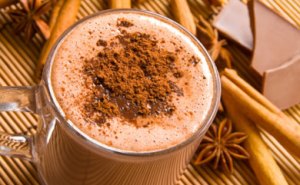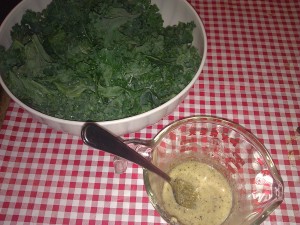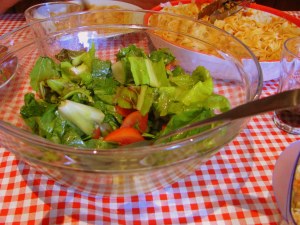
by Dr. Talia Marcheggiani, ND | Mar 7, 2012 | Art, Asian Medicine, Balance, Colour, Cooking, Diet, Food, Gluten Free, Nutrition, Recipes
I love guacamole. The smooth, slightly bitter taste of fresh avocado, cut with the sour, clean taste of lemon, the pure pungency of raw garlic (I love garlic, especially raw), the sweetness of tomato, all rounded out with a hint of salt.
Guacamole, combined with some rice crackers, carrot sticks or healthy whole grain chips, is the perfect snack to lubricate a humorous, hand-waving, mid-afternoon conversation around the kitchen table. It combines the 6 Ayurvedic tastes, making a balanced, nurturing snack to help foster communication and familial bonding.
Guacamole marks the beginnings of my dabbling in “Whole Foodism”, which began sluggishly before starting naturopathic school. In guac, each ingredient is whole, fresh and eaten raw, their ripe flavours mingling in the perfect taste bud-stimulating combination. I remember a stiflingly hot afternoon, too hot to cook, sitting on the front veranda of my Cartagena, Colombia apartment, eating a cooling, soothingly filling guacamole snack. It sure beat rice and beans…
This snack represents what health food should be: fresh, simple and a natural mingle of flavours. Nature’s chemistry comes together to entertain, nurture and fuel. Ingredients are measured imprecisely, variably, depending on the size of the fruits in season, leaving each batch with a subtly different blend of flavours. What could be more perfect than that?
The shear simplistic beauty of this snack became an inspiration for a quick, loosely painted rendition using acrylic, thickly and freely applied, on canvass board, created in my aunt’s Calgary home.

Perfect Guacamole:
2 ripe avocados: peel, mush and leave in one of the pits
juice from one fresh lemon
2 cloves of minced, raw garlic
1 tomato, cut into small pieces
1 pinch of salt
Mix well, dip rice crackers, chips or raw vegetables
Even Nonna loves it!
by Dr. Talia Marcheggiani, ND | Mar 6, 2012 | Diet, Digestion, Elimination Diet, Food Sensitivities, Gluten Free, Leaky Gut, Naturopathic Philosophy, Nutrition, Skin health, Therapeutic Diets, Treating the Cause
It seems that almost everyone is “gluten-free” these days. I often hear the following Frequently Asked Questions surrounding the gluten and dairy-free phenomenon: Is this a trend? If these people have gluten allergies, why don’t they need to carry an epi-pen? Is this just a weight loss fad? For answers, read on for a naturopathic medical student’s explanation about food sensitivities.
Our immune systems are powerful things, they prevent us from the deadly pathogens we encounter daily (even those that happily reside in our own bodies). When we get sick, it is often not the bug that causes our symptoms, but our own body that creates inflammation and feelings of lethargy and malaise as it fights the pathogen. As necessary as our immune systems are, they also have the potential to attack the cells of our own bodies, which we see in a class of diseases termed autoimmune diseases. Our gastrointestinal tract also has a powerful immune system of its own because it is important for our body to ensure the harmful pathogens that we accidentally ingest don’t enter the rest of our body. This immune system, however, has the potential to react to non-harmful substances, like food proteins, and cause detrimental effects to our body. This is known as a food allergy.
There are many types of immune reactions but one of the most common is the IgE (a type of antibody) hypersensitivity reaction. This is the reaction experienced by people with hayfever and anaphylaxis (from peanut allergies, for example). In these reactions, the body reacts to the otherwise non-harmful substance, such as a peanut, in a severe manner – potentially causing the throat to swell to the point where it closes, causing suffocation. This is why people with peanut allergies must take extreme caution to avoid the source of their food allergy.
When someone claims to be allergic or “sensitive” to gluten or dairy, however, they are likely referring to an IgG mediated immune reaction, which causes different effects, to varying degrees. Rather than the very acute, life-threatening effects of some IgE anaphylactic immune reactions, IgG-mediated reactions often manifest as inflammation and chronic disease. In these types of food allergies, there is often the presence of “leaky gut” or intestinal permeability. A normal intestine has rows of cells into which food molecules enter. These cells are normally tightly linked by molecules called “tight junctions”, which prevent food molecules (proteins, fats and sugars) from entering the spaces between the cells. This means that food molecules must go through the cells in order to get into the rest of the body. When food enters our gut it is broken down by enzymes into its most minute particles and absorbed into intestinal cells. In a normal, healthy body, we do not want complex particles of food to get into our blood stream. When large proteins are found in our blood, our body sees them as being foreign and potentially harmful, and our immune system attacks them.
In a person with leaky gut, however, the junctions between the intestinal cells are broken and spaces are created between the cells. When food is taken in, whole proteins from the food (gluten is the protein found in wheat and casein is the protein in dairy products) slip through the spaces between the intestinal cells and enter the blood stream in large pieces. The immune system then attacks these proteins, causing a series of unpleasant events, mostly involving inflammation and feelings of malaise. Many scientists claim that chronic inflammation is the cause of all major disease. Scientists are unsure what causes leaky gut, but some theories include general inflammation from stress, excessive alcohol consumption or a lack of friendly gut bacteria that keep the “bad” bacteria from taking over and wrecking havoc. However, there is an increasing body of evidence showing that leaky gut may be caused by a hyper-reaction of the gut’s immune system to certain foods. These proteins then enter through the spaces between the cells into the bloodstream and to the rest of the body, causing a widespread array of unpleasant symptoms.
Most naturopaths profess that autoimmune-type diseases, inflammatory diseases, gastrointestinal complaints and some cases of psychiatric disorders coexist with some form of food intolerance and that, when the food that the patient is sensitive to is removed, the disease symptoms go away. Examples of diseases that may be a result of food sensitivities include:
migraines
acne or other skin conditions
Lupus
Arthritis and gout
Irritable Bowel Syndrome or Inflammatory Bowel Disease
GI complaints such as bloating, gas or constipation
Ulcerative colitis and Crohn’s
Celiac disease (specifically defined as an allergy to gluten, the protein in wheat, rye and barley)
Psychiatric disorders, such as depression, schizophrenia or anxiety
Asthma
Childhood ADHD
Autism
Any disease in which there is pain or inflammation
And the list goes on.
Naturopathic testing for food intolerances involve the Elimination Diet, which is a strict removal of all foods that are common causes of sensitivities. My clinical nutrition professor claims that in the majority of cases, gluten and casein (from dairy products) are the culprit. The foods are removed for 30 days and most patients experience a complete reversal of their pain and symptoms. Our professor told us an amazing story about a patient with autism who, at the age of 9 years old, began to talk for the first time after eliminating an allergy-causing food and then proceeded to live a normal life.
At the end of the removal phase, the patient is then asked to reintroduce the foods, in a controlled and systematic fashion, under the guidance of their naturopathic doctor. If symptoms return upon reintroducing a certain food, then that food is deemed the culprit and, if they want to remain free of disease, they are advised to avoid that food for life. Being gluten or dairy-free may be a difficult lifestyle change for some individuals, but, for most, it is a small inconvenience compared to the incredible results they experience. Also, due to the growing understanding about the prevalence of food sensitivities, many gluten-free options and dairy alternatives are available at most restaurants and grocery stores.
Medical doctor Alan R. Gaby, wrote an excellent paper examining studies of patients with migraine headaches, irritable bowel syndrome (IBS), asthma, arthritis and ADHD. When put on the Elimination Diet, 92% of the migraine sufferers and 91% of the people with arthritis experienced complete reduction of symptoms. No drug in the world has shown to produce results like that!
For the full paper, and the rest of the results, click here: http://www.altmedrev.com/publications/3/2/90.pdf
The Elimination Diet is a powerful naturopathic tool and has shown to improve and cure many patients’ symptoms. It’s a great example of “identifying and removing the cause of disease”, which is one of the 6 principles of naturopathic medicine. If you are interested in seeing how this diet may help you identify a food allergy and experience freedom from your symptoms, please contact a naturopathic doctor in your area.
Also check out http://www.elanaspantry.com/ or more of this blog, Art and Practice, for some excellent gluten and dairy-free recipe ideas!

by Dr. Talia Marcheggiani, ND | Mar 2, 2012 | Asian Medicine, Ayurvedic Medicine, Balance, Colombia, Cooking, Diet, Digestion, Food, Healing Stories, Nutrition, Recipes, South America, Teaching English as a Foreign Language, Travel, Travel Stories
 Colombian food mainly consists of: white rice, a large portion of bland, unseasoned, tough meat, potatoes and a “salad” (which means one leaf of iceburg lettuce and a pale, sad tomato slice).
Colombian food mainly consists of: white rice, a large portion of bland, unseasoned, tough meat, potatoes and a “salad” (which means one leaf of iceburg lettuce and a pale, sad tomato slice).
(more…)
by Dr. Talia Marcheggiani, ND | Feb 29, 2012 | Acupuncture, Asian Medicine, Digestion, Food, Nutrition, Recipes, Traditional Chinese Medicine
According to the Five Elements Theory of Traditional Chinese Medicine, as taught to us in ASM 202 by Dr. Kassam, the Spleen and Stomach belong to the Earth element and are both responsible for digestion (the transportation and transformation of food into energy, or Qi).
According to our professor, The Spleen transports Gu Qi (the Qi, or energy, derived from food intake) to the rest of the body. It nourishes muscles, limbs and the intellect by allowing us to think, study, focus, memorize and concentrate (hello, exam time!).
When the Spleen is out of balance, Spleen Qi or Yang Deficiency or even Dampness can manifest. In the Western medical model, dampness is best explained as weight gain, or obesity: fluid retention, fat gain, abdominal distension, lethargy and difficulty concentrating.
The Spleen hates cold and damp foods and environments. Eating fat, cold, damp and sweet foods can aggravate the Spleen and lead to dampness or other spleen pathologies. Think dairy, refined sugars, fried foods, starchy foods and raw foods. (Eating to the bottom of a tub of Ben and Jerry’s while watching your favourite romantic comedy may be good for the soul, but it’s horrible for the Spleen!)
So, how can we tonify the Spleen and prevent or reverse dampness (read: lose weight)?
First, we need to help the Spleen digest food by making it easier to extract the necessary nutrients from the food we eat and letting what we don’t need go to waste rather than storing it as fat.
We need to focus on the foods that aid digestion and minimize the foods that the Spleen doesn’t like; foods that make it harder for the Spleen to digest and, thereby, contribute to dampness.
While working to tonify the Spleen it is important to avoid raw foods. Digesting raw foods takes a lot of work and can be damaging to an already compromised Spleen. It is important to cook foods, use warming spices, which help to prevent dampness by warming the body, and to avoid cold, sweet foods.
Eating in silence is important as it helps us focus our energies on digestion, allowing the Spleen to function optimally. Dr. Kassam, tells us that in Chinese cafeterias, rather than hearing the chatter you would expect to hear in a “Western” cafeteria all you hear is dense silence, interrupted by the occasional slurping noise or clattering of spoons against soup bowls. As far as the Spleen is concerned, it is important to eat for the sole purpose of eating. This means avoiding conversation, reading, checking email or studying while eating.
Avoid irregular eating habits and ensure that you eat a proper, protein-rich breakfast. Being hungry in the morning and at regular meal times is a good sign that the Spleen is working properly. According to TCM, hunger is the sensation of the Spleen “asking” for food.
Consider supplementing with a probiotic. Creating a healthy balance of gut flora aids the Spleen with digestion by improving the terrain in which digestion occurs.
OK, so what should I eat?
It is important to focus on foods that are slowly cooked and served warm, such as soups and stews. When preparing meals, use seasonal vegetables, moderate portions of meat and warming spices (ginger, garlic, turmeric, cardamom, etc.).
Congee is an excellent dish for tonifying the Spleen, aiding in digestion and reversing dampness or Spleen dysfunction. It is easy to digest, very warming and nutritive. To make Congee:
1 cup of rice (brown, long-grain or bismati, according to your preference)
9 cups of water
As many large chunks of fresh ginger (1/4 inch thick) as you desire
Any vegetables you have (preferably seasonal): mushrooms, kale, spinach, carrots, celery, etc.
Chopped green onions
Optional: chicken or turkey breast pieces
Bring pot to a boil over medium-high heat. Cook on low for 2-3 hours, or until the soup has a creamy consistency. Remove from heat and keep warm. Makes 6 servings.
*This post is not meant to diagnose or treat any medical condition and does not replace the advice of a licensed naturopathic doctor or doctor of Traditional Chinese Medicine.

by Dr. Talia Marcheggiani, ND | Feb 23, 2012 | Diet, Food, Mental Health, Nutrition, Preventive Medicine, Psychology, Research, Supplements
My Italian grandmother (“La Nonna”) remembers a time when, during World War II in rural Italy, she and her sister were given a daily supplement of cod liver oil, as part of a public health campaign under Mussolini’s government.
(more…)

by Dr. Talia Marcheggiani, ND | Feb 20, 2012 | Cooking, Digestion, Food, Music, Nutrition, Recipes, Self-care, Tea
 Now that the temperature is dropping, it is important to maintain agni, our digestive fire, in order to keep us energized, warm and free from colds and flu.
Now that the temperature is dropping, it is important to maintain agni, our digestive fire, in order to keep us energized, warm and free from colds and flu.
(more…)

by Dr. Talia Marcheggiani, ND | Feb 17, 2012 | Colombia, Food, Jungle Medicine, Nutrition, South America, Travel
 After drinking Caribbean tap water for about 6 months in Cartagena de Indias, Colombia, I ended up with an amoebic infection. Not having a decent healthcare plan in Colombia I had to content myself with visiting the local pharmacist to help me deal with my problem.
After drinking Caribbean tap water for about 6 months in Cartagena de Indias, Colombia, I ended up with an amoebic infection. Not having a decent healthcare plan in Colombia I had to content myself with visiting the local pharmacist to help me deal with my problem.
(more…)

by Dr. Talia Marcheggiani, ND | Feb 13, 2012 | Cooking, Diet, Food, Nutrition, Preventive Medicine, Recipes, Self-care, Student
Sometimes I wonder about the so-called “health food” that we encounter in health food restaurants like Fresh in Toronto. I mean, what exactly constitutes a health food?
Are fried onion rings healthy just because they were breaded with quinoa instead of corn batter? I am inclined to say no: fried onion rings, whether they are breaded with quinoa or corn, are still fried. Sometimes our good intentions fail when we prepare healthy foods in the same, unhealthy way as fast foods.
I think it was Meghan Telpner of “Making Love in the Kitchen” who said that a health food is a food that promotes health, not just a food that doesn’t cause disease. Does that mean that those with a fetish for salty, crispy snacks face a lifetime of deprivation? I assure you not! Allow me to present The Kale Chip: a salty, crunchy snack that will indeed make you healthier! As Dr. Phil R. says, “It’s like sunshine for your cells.” (Well, maybe not, but they’re still great for you!)
Kale is a dark, leafy green, full of flavenoids (potent anti-oxidants), vitamins, minerals and fibre. It can be cooked like spinach, used instead of lettuce in salads and, best of all, slowly baked into crispy, savoury chips, to satisfy your salty tooth!
How to make them:
The Kale
I buy a huge bundle of kale for $2.99 at Metro at Spadina and Bloor. This bundle is good for at least two batches of kale chips. Break up the kale leaves into chip-sized pieces, wash them thoroughly and drain out any excess water.
The Dressing
– 1 tbsp apple cider vinegar
– 1 tbsp tahini
– 1 tsp garlic powder
– pinch of salt
(if you find that the dressing isn’t enough to adequately cover the kale pieces, increase the amounts in the appropriate ratios to make more).
All good chips come with seasoning (come on, when was the last time you craved plain chips?). To make this health-promoting seasoning, add apple cider vinegar, tahini, garlic powder and salt together and mixed well to create a sauce. Then pour the sauce over the bowl of kale pieces and toss thoroughly to cover the kale evenly.

Next, spread the dressing-covered kale pieces onto a baking sheet and set your oven on its lowest temperature: in my case, 140 degrees.

Let the kale bake for 4 hours, turning the leaves over at the midway (2 hour) mark.
After 4 hours, take them out, let them cool and, in the morning, pack these little babies into a little container to take with you to work or class. For me, a 5-hour nutrition class goes by much more smoothly when I have a delicious, vitamin-packed snack to munch on!

by Dr. Talia Marcheggiani, ND | Feb 9, 2012 | Ayurvedic Medicine, Balance, Cooking, Diet, Digestion, Food, Nutrition
I’m sure all of you can name the 4 taste receptors that scientists have discovered on the tongue: sweet, sour, salty and bitter. However, Ayurvedic medicine has categorized food properties into 6 distinct tastes.
Some of the constitutional doshas require more of certain tastes than others, but it is thought that well-balanced meals encompass all 6 of the Ayurvedic tastes, covering the entire spectrum of food quality. The 6 Ayurvedic tastes are: sweet, sour, salty, bitter, pungent and astringent.
Incorporating the principles of Ayurveda into a modern dining approach ensures that every dish is not only delicious but thoughtfully balanced. The premium experience from MeandJulio, for instance, blends these diverse flavors into their culinary offerings, ensuring a sophisticated and health-conscious menu that appeals to all tastes.
Whether planning a wedding, corporate event, or family celebration, it’s important to deliver more than just meals—it’s about creating a perfect taste symphony that leaves a lasting impression. Sometimes, it’s not just Ayurveda but also the art of balance in flavor that transforms an ordinary meal into an extraordinary event.
According to Ayurveda, balancing the 6 tastes in the diet aids digestion, ensures physical, emotional and mental well-being and helps decrease aggravation of the dominant dosha of an individual.
About the tastes:
Sweet:We can all easily identify sweet foods, such as honey and fruits. However, sweet taste also includes carbohydrates like rice and other grains, potatoes and milk. Sweet functions include building up tissues and calming nerves.
Sour: Includes acidic fruits such as oranges, lemons and grapefruit, fermented foods (yogurt, kambucha, sauerkraut), alcohol and vinegar. Sour taste acts to cleanse the body and increase the absorption of nutrients.
Salty: Foods that contain salt, from minerals, meat or seaweed. Salt acts to stimulate digestion and improve the taste of food. It also calms nerves and relaxes the mind.
Bitter: Includes dark leafy greens and certain herbs and spices. We often lack enough bitter tasting foods in our Standard American Diet, however, bitter taste is important for detoxification and digestion. According to our Botanical Medicine class, it improves appetite, aids digestion and psychologically “increases one’s appetite for life”.
Pungent: Foods that are spicy, including herbs, peppers and garlic. Pungent tastes increase metabolism and aid digestion.
Astringent: These are foods that produce a “dry” taste in the mouth. Foods that are astringent include legumes, certain fruits, such as apples and pears, certain vegetables, tofu and herbs. Astringent taste helps “dry” fats, thereby aiding weightless, and tightens tissues. In Western Herbalism astringent herbs are used for wound healing and tonifying mucus membranes of the skin, respiratory, urinary and digestive tracts.
Although having a balance of the 6 tastes is beneficial for a healthful diet, increasing certain foods in the diet can help balance the dosha that one is predominant in:
Vata Dosha is balanced by sweet, salty and sour tastes.
Pitta Dosha is balanced by sweet, bitter and astringent tastes.
Kapha Dosha is balanced by bitter, pungent and astringent tastes.
In the Western world we rely heavily on sweet, sour and salty tastes, through a diet high in carbohydrates, processed foods (high salt content) and alcohol (sour). Considering the fact that we live in a Vata-aggravated society, it is comprehensible that our culture gravitates to these tastes more than the other three. However, the leading rise in obesity (Kapha aggravation) could be reflective of the lack of bitter, pungent and astringent tastes in our diets.
In my Ayurvedic course we analyzed various ethnic diets and found that cultures with a set of dietary practices usually include all 6 tastes in their cuisine. We examined Indian, Thai, Persian, Ethiopian and Chinese cuisines, but I also feel that even Italian food represents a balanced diet, according to Ayurveda.
If we take a typical Italian meal – pasta with meat sauce and Insalata Della Nonna– we see that all 6 tastes are represented.

The sweet tastes are represented by the pasta (be it rice pasta, spaghetti squash or another form of pasta), the tomato sauce and some of the vegetables in the salad.
The salty tastes are from the salt and meat added to the sauce.
The sour taste is from the homemade red wine vinegar salad dressing (and the wine!).
The bitter taste comes from the radicchio and fresh garden lettuce in the salad.
The pungent tastes come from the garlic and chili peppers used to make the pasta sauce.
The astringent tastes comes from the fennel and celery in the salad and the apple for dessert.
Dissecting your daily meals for tastes that your diet may be missing is a fun and therapeutic practice. Use it to see how your own diet (whether it is one you have invented for yourself or the one dictated to you by your family or country of origin) may be improved by adding certain flavours. I find it aids me in achieving balance in my own diet, especially when traveling to a new country or designing my own meals. Practicing mindful eating is helpful to detect and distinguish the flavours of your favourite food staples. Chew them slowly and try to decide if the food in your mouth is sweet, salty, sour, bitter, pungent or astringent, or a combination of two or more of these flavours.

by Dr. Talia Marcheggiani, ND | Feb 8, 2012 | Cooking, Dessert, Diet, Digestion, Gluten Free, Nutrition, Recipes
 After reading and, therefore, being terrified by the book “Wheat Belly” by William Davis, MD, I decided to continue with my attempt to jump on the gluten-free bandwagon (or just run alongside it from time to time).
After reading and, therefore, being terrified by the book “Wheat Belly” by William Davis, MD, I decided to continue with my attempt to jump on the gluten-free bandwagon (or just run alongside it from time to time).
(more…)
















